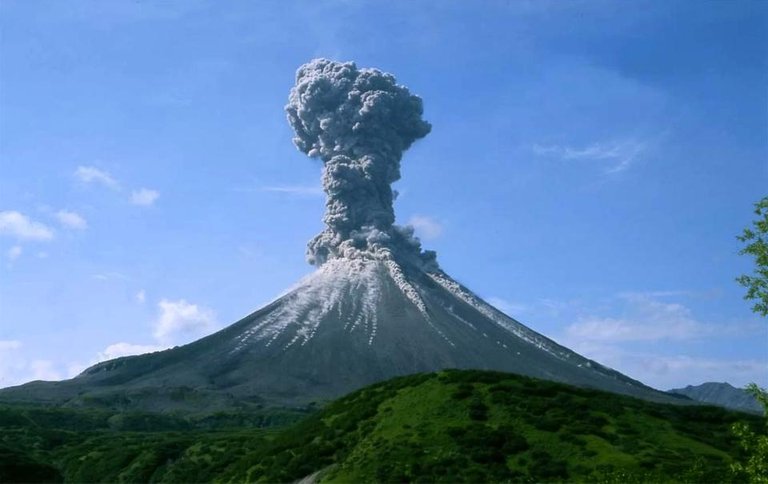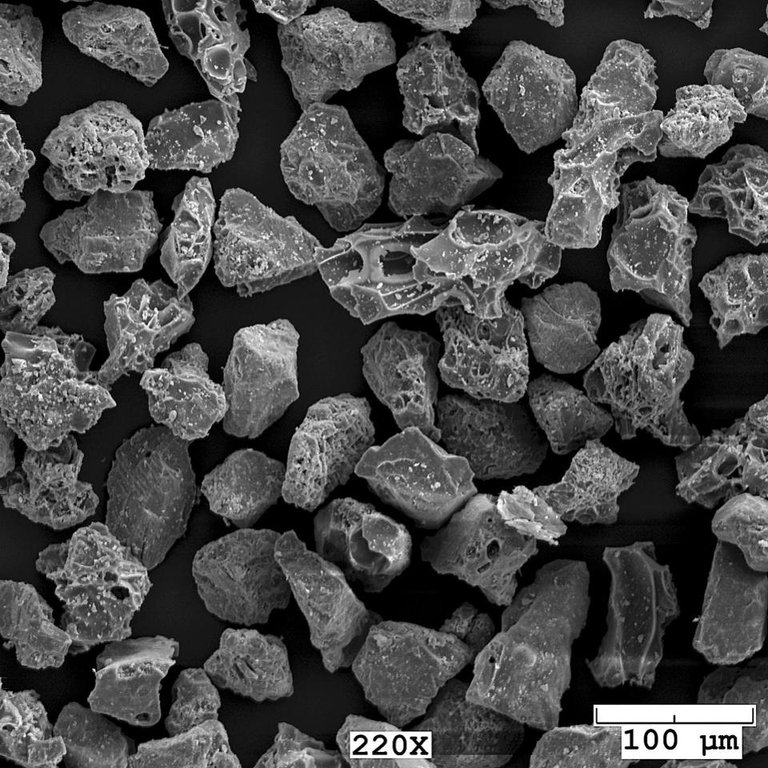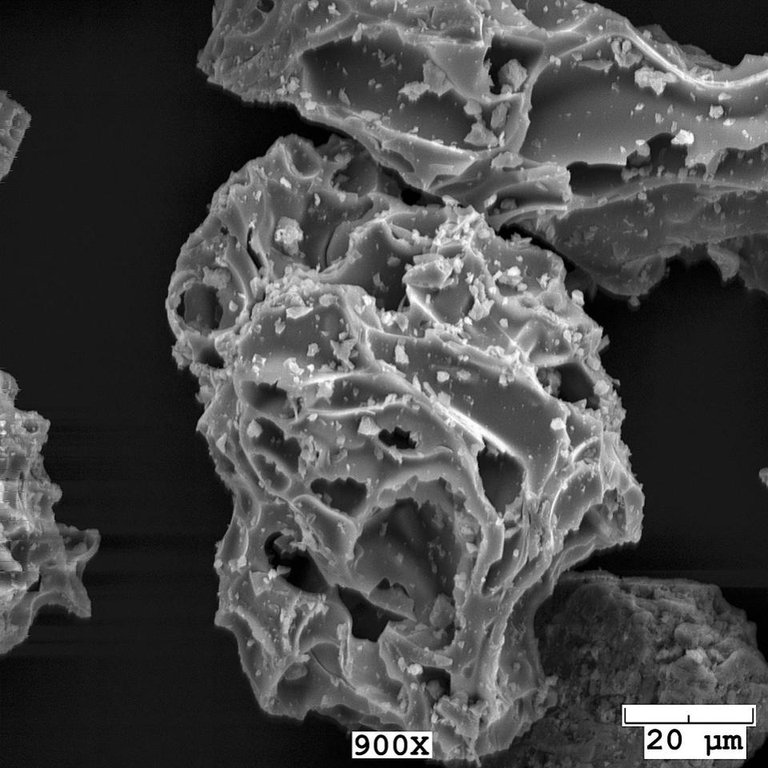
Volcanic ash isn't actually ash.
Yes! Thank you @Forbes
Every few months, a volcanic eruption occurs on Earth, with lava flows and enormous plumes of volcanic ash.These small eruptions might produce only ~0.01 cubic kilometers of ash, while large, rare ones can produce thousands.
Scientists studying the ash from a recent eruption of Ol Doinyo Lengai volcano in Tanzania. This ash will not wash away during the next rainfall like combustive ash would.
Unlike the result of combustion, however, what we call volcanic ash isn't ash at all.
An ash particle imaged with an electron microscope from the Mt. St. Helens eruption of 1980. Volcanic ash has fundamentally different properties from normal, combustion-driven ash.
Combustive ash is what's left when carbon-based material burns in the presence of oxygen: calcium carbonate, potash, nitrogen, and minerals and oxides.
It has many practical and survival uses, and is easily washed away with water.
The three-member crew of the Expedition Five mission onboard the International Space Station was able to observe Mt. Etna’s spectacular 2002 eruption, and photograph the details of the eruption plume and smoke from fires triggered by the lava as it flowed down the 11,000 ft mountain. Note the visual difference between the fire-caused ash (in white) and the volcanic ash (much darker) even as viewed from space.
Instead, volcanic ash is made of rock, mineral, and glass fragments as small as 4 microns (μm) each.

Pavel Izbekov and Jill Shipman, University of Alaska Fairbanks
A scanning electron microscope (SEM) image of an ash particle, collected following the volcanic eruptioin of Mount Redoubt in Alaska on March 22, 2009.
As magma rises from beneath the Earth, the gases dissolved within it expand and escape, shattering solid rock and shredding magma fragments into the air.
These tiny, airborne rock and glass fragments then solidify, where they can be blown tens or even thousands of kilometers away.

Pavel Izbekov and Jill Shipman, University of Alaska Fairbanks
Volcanic ash--pulverized rock ejected from a volcano--consists of tiny jagged pieces of rock and glass. Unlike wood ash, newly ejected volcanic ash is sharp and abrasive. It can damage car finishes, clog machinery, vents, and pipes, and can cause respiratory discomfort. In large enough quantities, its weight can be enough to collapse roofs, especially if it gets wet.
Macroscopically, volcanic ash is hard, abrasive, corrosive, and does not dissolve in water.
Volcanic ash cannot be washed off, but must be gathered and swept up, as it is made of insoluble minerals, rocks, and glasses formed at the magma/atmosphere interface.
Large eruptions can block the sun, cause acid rain and thunder/lighting, and even suffocate nearby residents.
US Geological Survey
Heavy ashfall around Mount Pinatubo in the Philippines in 1991 not only blanketed the surrounding areas in a thick layer of volcanic ash particles, but caused midday darkness due to the thickness of the ash clouds.
Ashfall then poses its own hazards to buildings and the environment.
Source:
https://www.forbes.com/
Source: https://www.forbes.com/sites/startswithabang/2018/04/23/volcanic-ash-isnt-actually-ash/#347ef1643dc1
Copying/Pasting full or partial texts without adding anything original is frowned upon by the community. Repeated copy/paste posts could be considered spam.
Spam is discouraged by the community, and may result in action from the cheetah bot.
More information and tips on sharing content.
If you believe this comment is in error, please contact us in #disputes on Discord
Hi! I am a robot. I just upvoted you! I found similar content that readers might be interested in:
https://www.forbes.com/sites/startswithabang/2018/04/23/volcanic-ash-isnt-actually-ash/